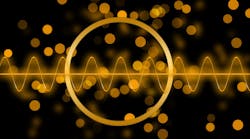Recently, I wrote about how many wireless standards are out there and how engineers choose one for their application. Well, let me tell you something—you don’t know the half of it. If your application is relatively simple, you have even more choices than you know.
Studying the FCC rules and regulations “bible," the Code of Federal Regulations (CFR) 47 Parts 15, 18, 95 and others you can discover some interesting possibilities. Of late, I learned of one alternative that fits basic industrial needs and eliminates the complexity of complying with some of the more well-known standards. This may be of interest if you’re designing wireless applications in one of these sectors:
- Industrial
- Facilities monitoring
- Alternative Energy
- Smart Grid Metering
- Lighting Control, remote
- SCADA
- Agriculture
- Waste-Water Pump Systems
- Municipality Well Water Management
- Energy Management
- Consumer
Most short-range wireless technologies use the industrial-scientific-medical (ISM) band spectrum in the 902- to 928-MHz and 2.4- to 2.4835-GHz, and more recently, the 5.725- to 5.850-GHz ranges. The 2.4-GHz band is loaded with Wi-Fi, Bluetooth, ZigBee, and a half dozen or so others. With all of the recent Internet of Things (IoT) activity, traffic in these bands is heavy and interference is a real problem. If you have a relatively simple but mission-critical application, you might want to consider some other possibilities.
If you dig deep enough into the CFR 47, or if you just happened to run across someone who knows, you may discover the Radio Control Radio Service (RCRS). You will find it in Part 95.701 and beyond. It’s a non-commercial short-distance radio service for wirelessly controlling the operation of devices including, but not limited to, model vehicles like boats, cars, or airplanes. But it can also be used for other purposes such as remote monitoring and control.
The RCRS regulations state the use of the 72- and 75-MHz bands for model control. For remote control, it designates the range of 26 to 28 MHz. Yes, that’s the same basic range as the CB radio service. Common uses are to turn some device off or on at a remote location. Or it could be used to transmit a signal from a remote sensor that turns some device on or off.
Details of the specification details include:
- Defined channel frequencies of 26.995, 27.045, 27.095, 27.145, 27.195, and 27.255 MHz.
- Channel bandwidth of 8 kHz maximum.
- Any form of emission and modulation, even analog, is permitted as long as it doesn’t exceed the bandwidth specification. ASK/OOK could be used but narrow band FSK seems more appropriate in this noisy segment of the spectrum. FSK is far more tolerant of impulse interference in industrial applications.
- Data rate is probably no more than 5 kb/s.
- Maximum power output is 4 W except for the 27.255-MHz channel where 25 W is permitted.
- Antenna height restrictions: No more than 20 feet above the building or similar structure, or 60 feet maximum from the ground.
- Most likely antenna is a quarter wave vertical (8-9 feet) for a base station and a tuned 12-in. “rubber ducky” type as used on some handhelds for remote nodes. Those base-loaded 3- to 4-ft. whips used for most CB radios will also work fine.
- Depending on transmit power and antenna, range is easily several kilometers or more.
Does this sound like something you can use?
Lemos International has some modules that seem to comply. These are the NTX0 transmitter (TX) and NRX0 receiver (RX) by Radiometrix. The TX uses narrowband FM (FSK) on 27.095 MHz. Max data rate is 5 kb/s. Power can be set to 10 dBm (10 mW), +17 dBm (50 mW), or +20 dBm (100 mW). It can operate with a supply of 2.9 to 15 V. The matching RX operates on the same frequency with a similar supply voltage. It also has an RSSI feature. The specifications state a usable range of over 1 km at 10 mW.
Looks like you’re on your own with a protocol but it would be simple if only off-on signals are needed. One possibility is to use available coder/decoders like Holtek H12, the CTA88, and even DTMF chips. UART signals are a good fit if your design is MCU-based. Other Radiometrix products that fit this technology are the multichannel LMT0 and LMR0 modules.
One major benefit of RCRS is that your products don’t need to go through the usual FCC wireless certification process. That’s typically a necessary and expensive ordeal for most wireless devices. The RCRS usage simply involves declaring that your devices conform to the rules and regulations. No third-party testing is involved. That may be justification enough to adopt this technology if it fits the application.
No telling what other hidden treasures are lurking in the CFR 47. I think I have said this before: If you’re designing IoT products or any wireless device, you need to have a copy of the FCC 47 CFR Parts 15, 18, and 95 for sure, but all Parts from 0 to 100 would be helpful and interesting.

